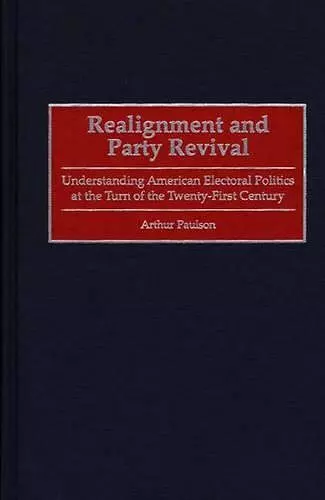Realignment and Party Revival
Understanding American Electoral Politics at the Turn of the Twenty-First Century
Format:Hardback
Publisher:Bloomsbury Publishing PLC
Currently unavailable, and unfortunately no date known when it will be back

Takes issue with widely accepted theories of dealignment and party decay in contemporary America.
Examines accepted theories of dealignment and party decay in contemporary America. The author argues that profound realignment occured in the 1960s and presents an alternative theory of realignment and party revival.
Are American political parties really in decay? Have American voters really given up on the major parties? Taking issue with widely accepted theories of dealignment and party decay, Paulson argues that the most profound realignment in American history occurred in the 1960s, and he presents an alternative theory of realignment and party revival.
In the 1964-1972 period, factional struggles within the major American political parties were resolved, with conservative Republicans and liberal Democrats emerging as the majority factions within their parties. The result was a critical realignment in Presidential elections, in which the decisive realignment involved the movement of white voters in the south toward the Republican coalition. The impression of dealignment came from the fact that electoral change in Congressional elections moved at a much slower rate. The south continued to vote Democratic for congress, usually for incumbent conservative Democrats. The result was an electoral environment which produced divided government. Secular realignment in congressional elections produced the Republican majorities of 1994. Now the conservative Democrats who were the swing voters since the 1960s, were voting Republican. The result is that the coalitions for yet another realignment are in place at the turn of the twenty-first century. After three decades in which the swing voters were relatively conservative, the new swing voter is a genuine centrist; an independent who is ideologically moderate. The coming realignment, Paulson asserts, will consummate the birth of a new, ideologically, polarized party system with a greater potential for party government, which would be a fundamental change for American democracy. A major resource for scholars, students, and other researchers interested in American parties and elections.
ISBN: 9780275968656
Dimensions: unknown
Weight: unknown
376 pages